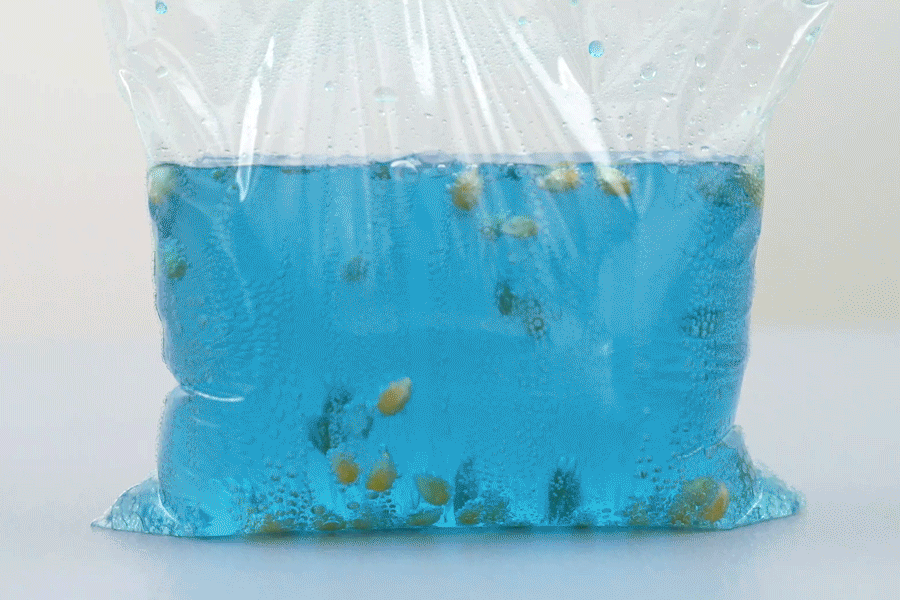Step-by-step tutorial
Step 1
Gather your materials.
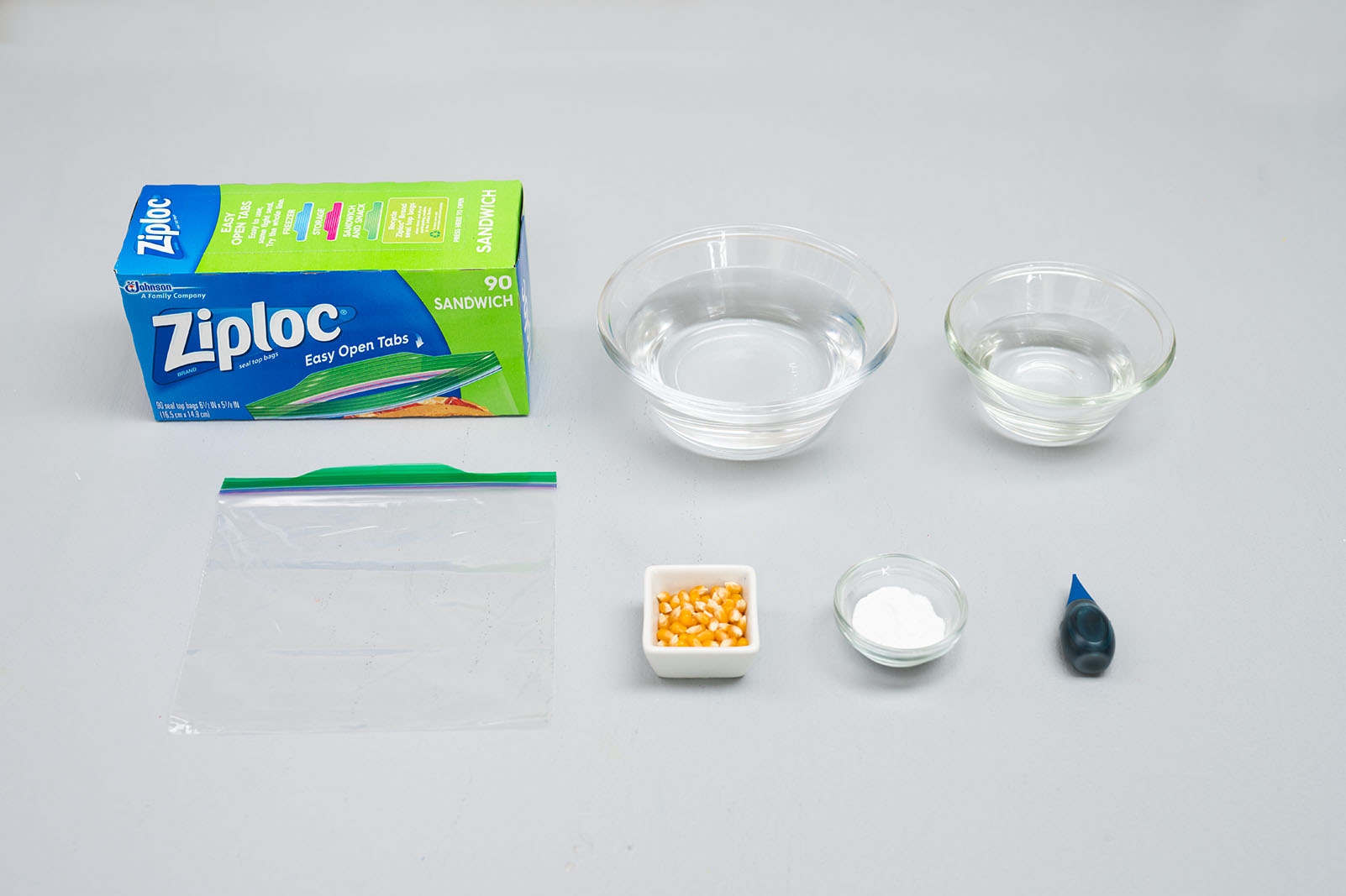
Step 2
Add 2 cups of water to a Ziploc® brand sandwich bag (avoid filling the bag beyond half its size). You can ask someone else hold the bag upright as you pour in the water.
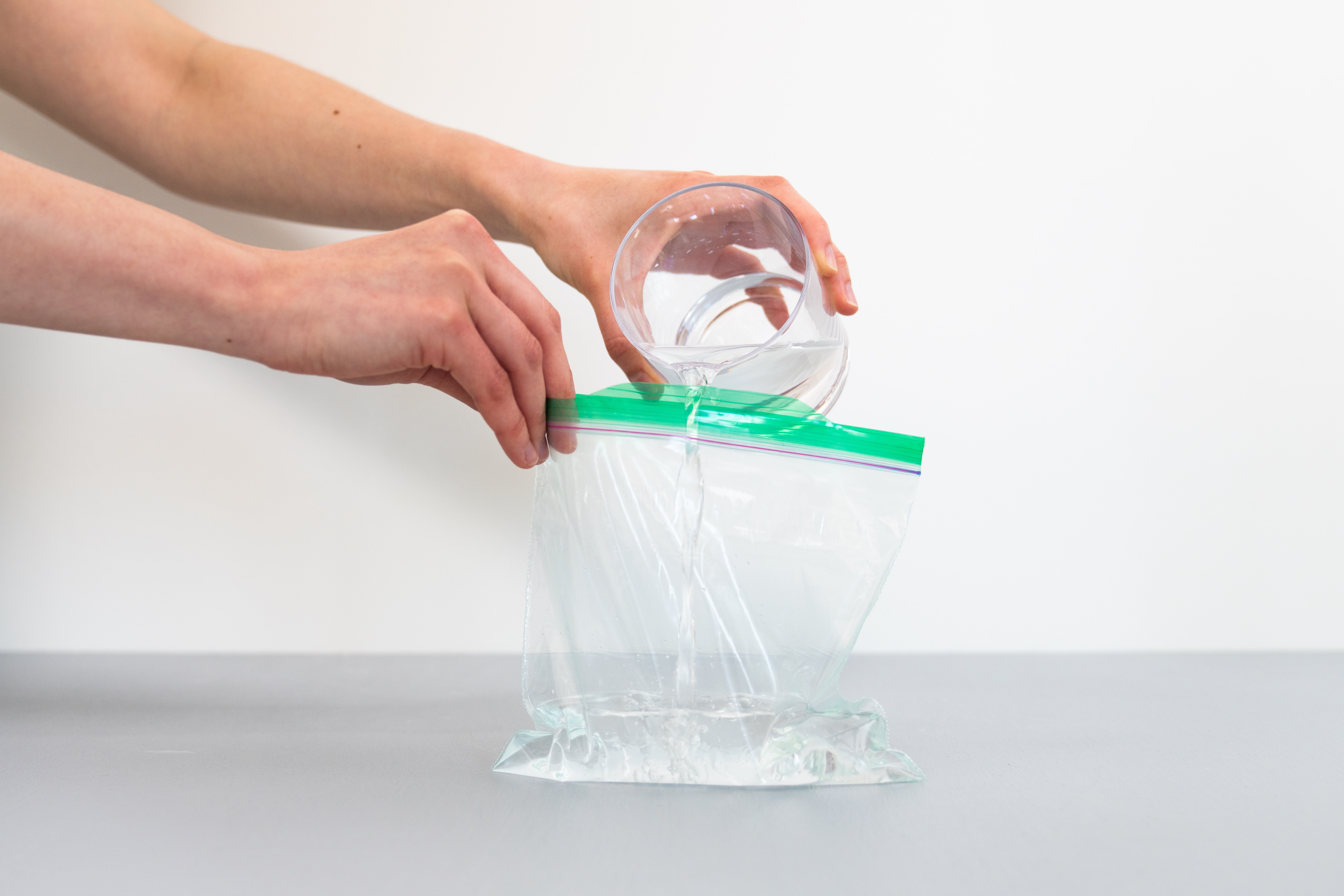
Step 3
Pour in 2 teaspoons of baking soda.
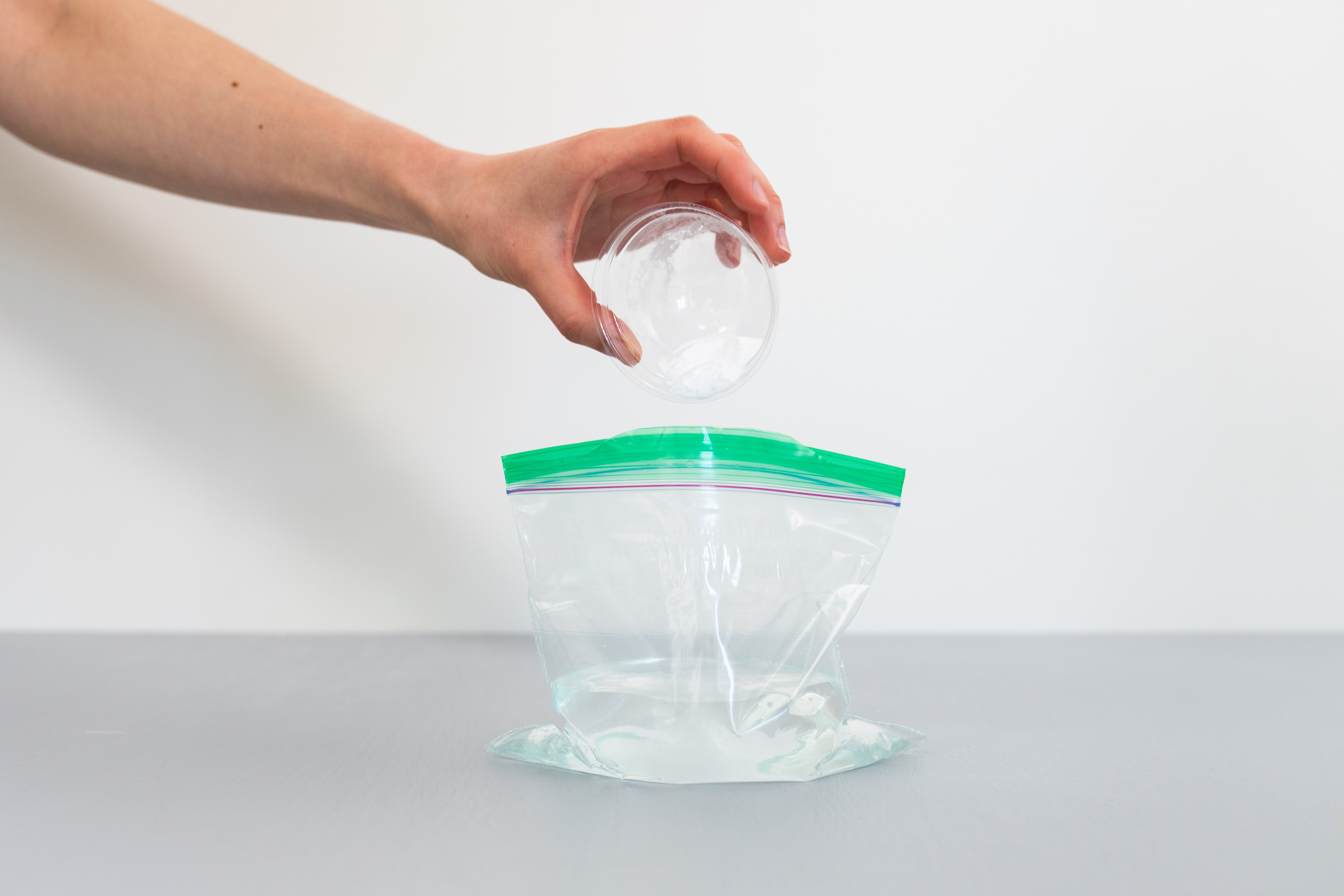
Step 4
Drop in some popcorn kernels; they should sink to the bottom of the bag.
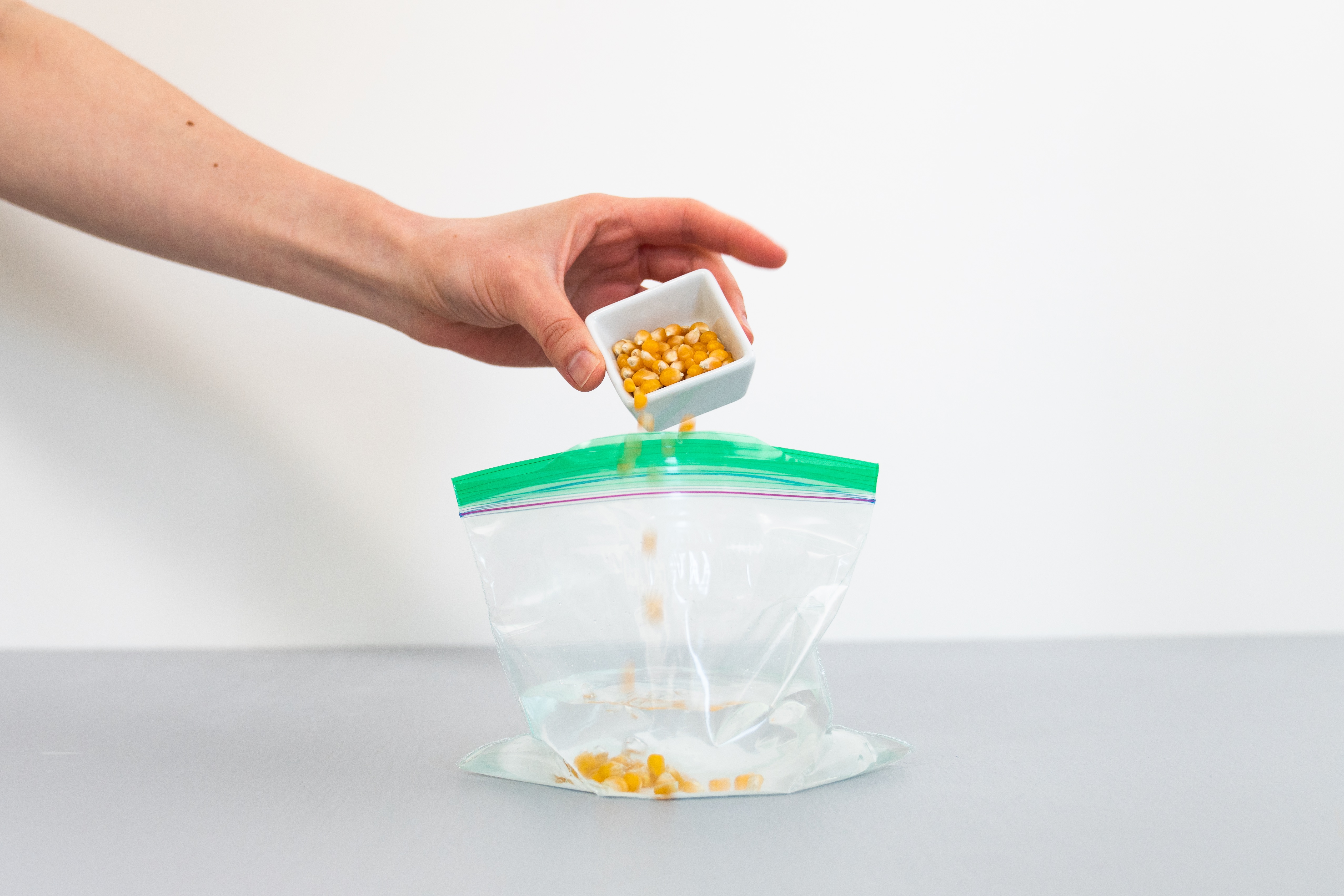
Step 5
Slowly pour in a ½ cup of vinegar. The mixture will fizz and your grains will begin to float to the top of the bag!
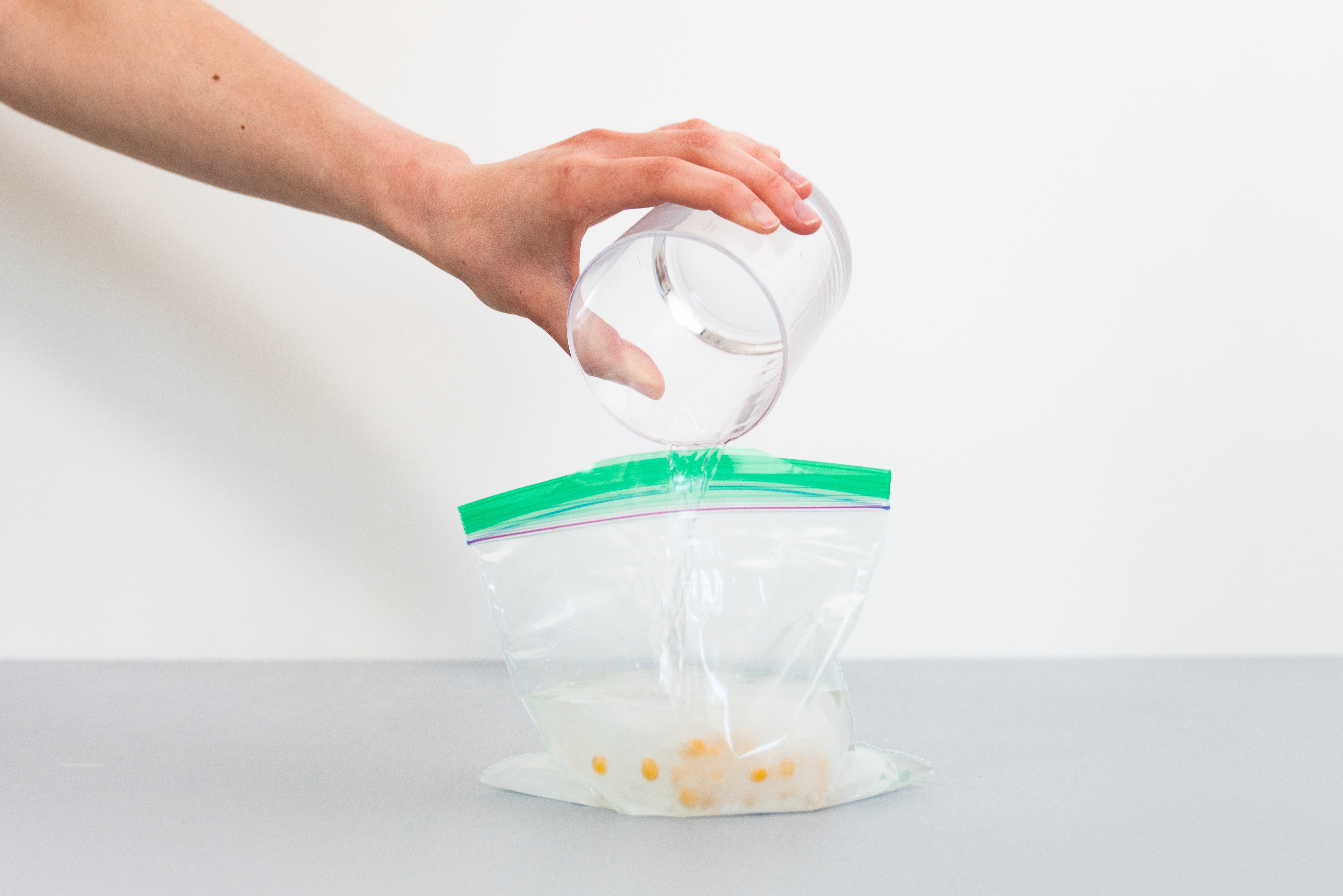
Step 6
Add a couple drops of food coloring to the mixture.
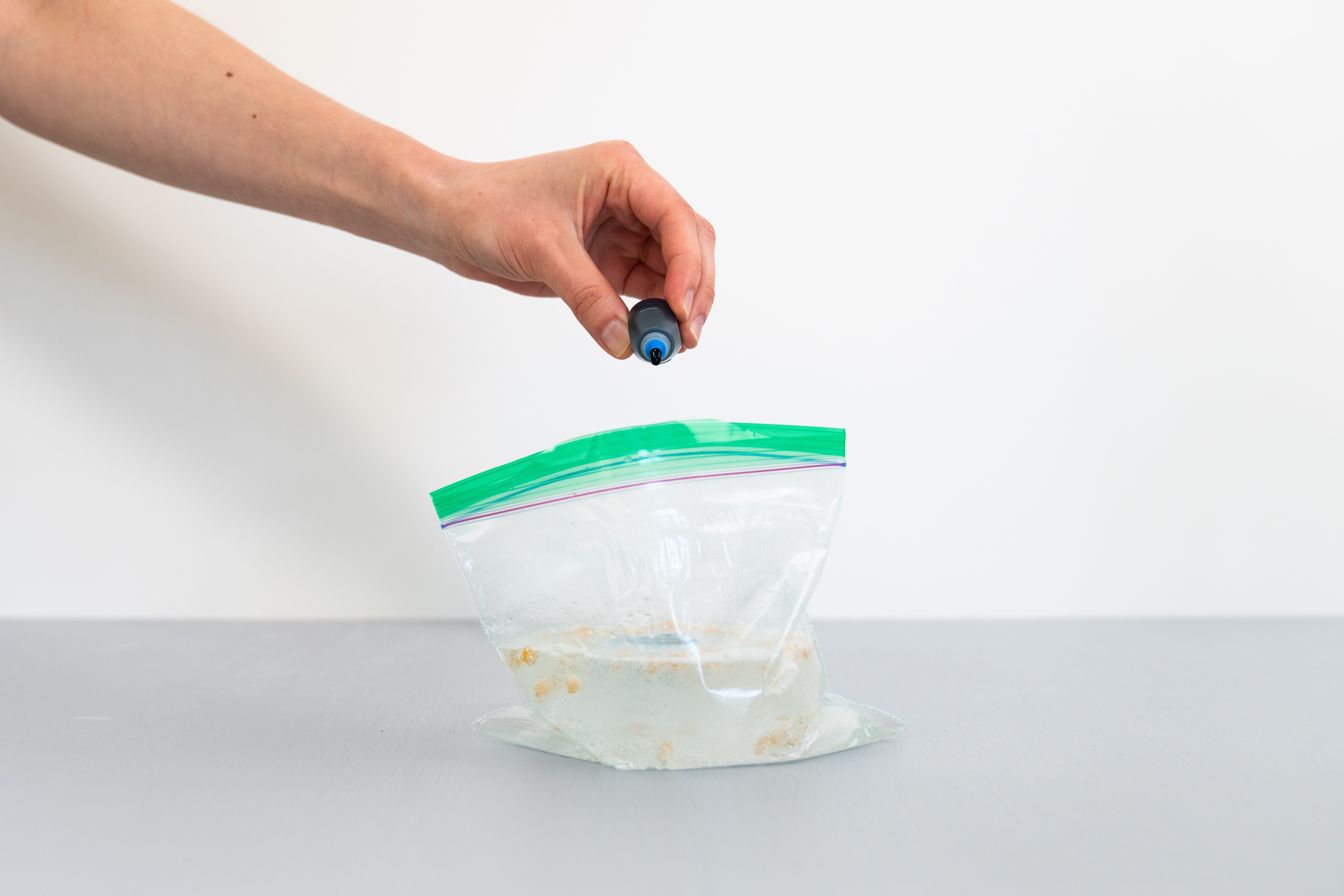
Step 7
Keep watching the kernels and how the bubbles lift them to the surface. Eventually as the chemical reaction slows down, the kernels will stop dancing and hopping. When this happens, you can add more baking soda and vinegar to the same bag and watch the reaction happen all over again! Try experimenting with other items in your pantry. What other materials do you think might hop and dance with a little help from carbon dioxide?
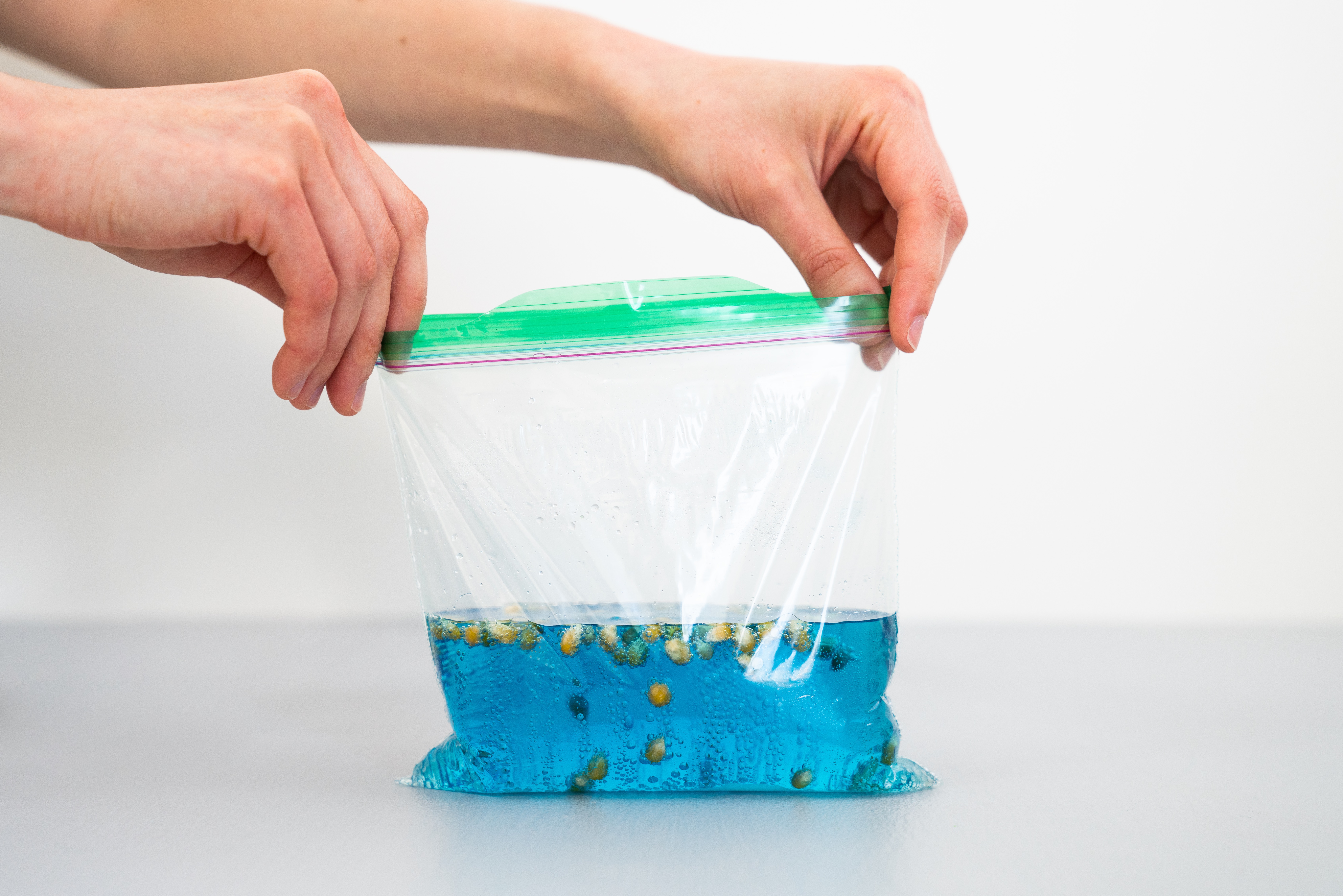
Learn more
We chose popcorn kernels because they are dense enough to sink in water, but not so heavy that they can’t be lifted by the bubbles. If you try this with rice, you’ll find it may not work as well — rice grains are too dense and too small to catch onto bubbles. What do you think will happen if you try this with raisins? Here’s a hint: raisins are not particularly dense and they have lots of nooks and crannies for catching bubbles!
